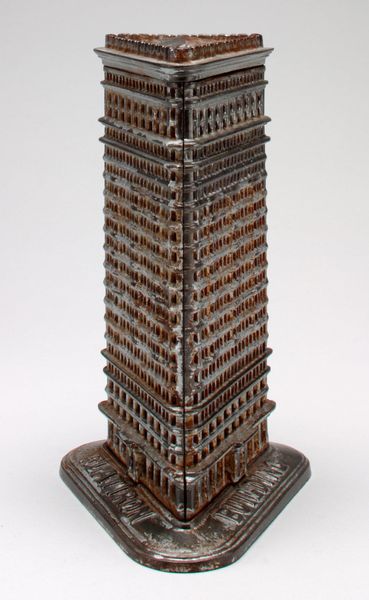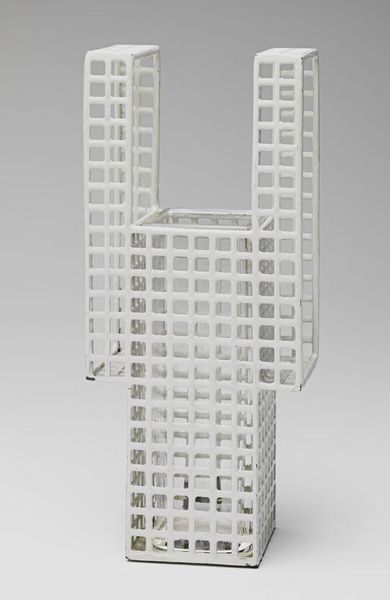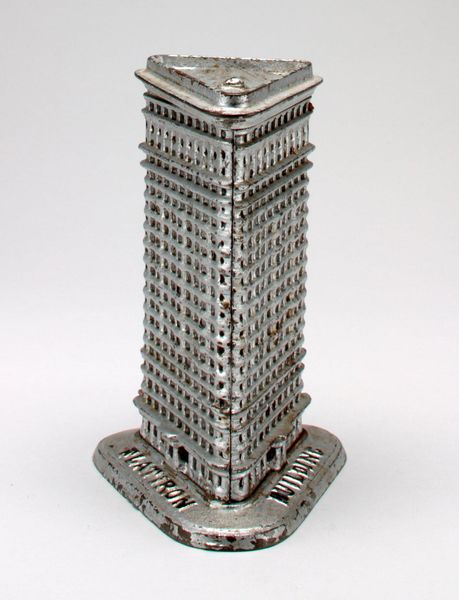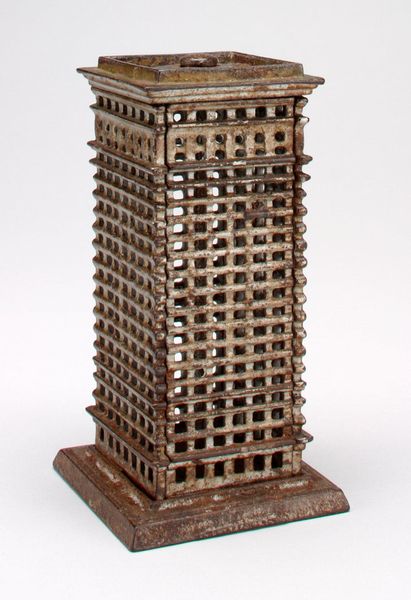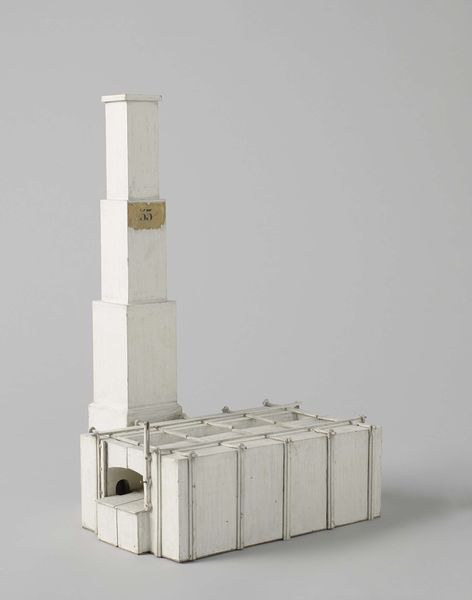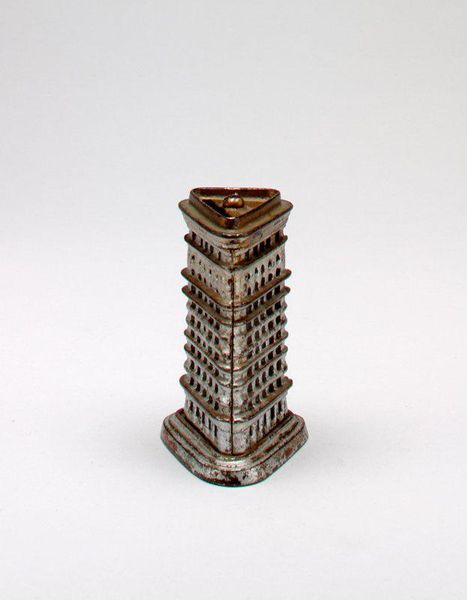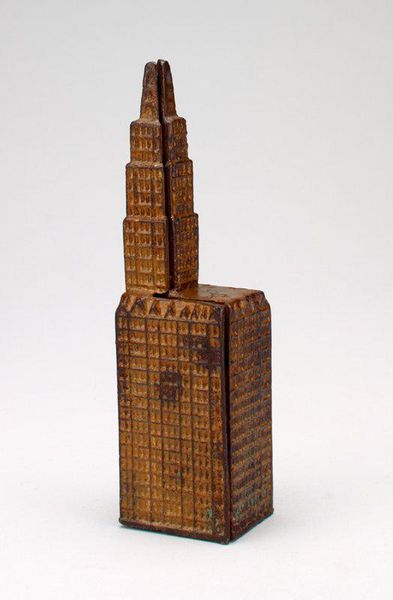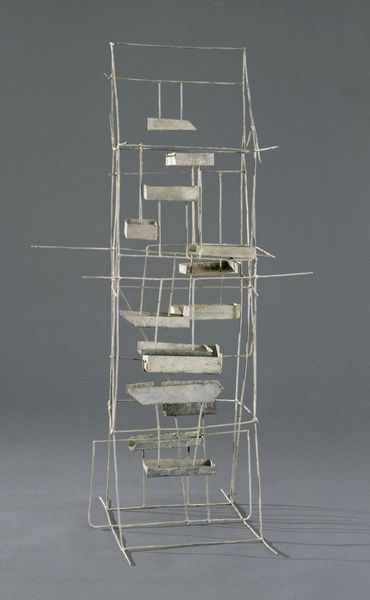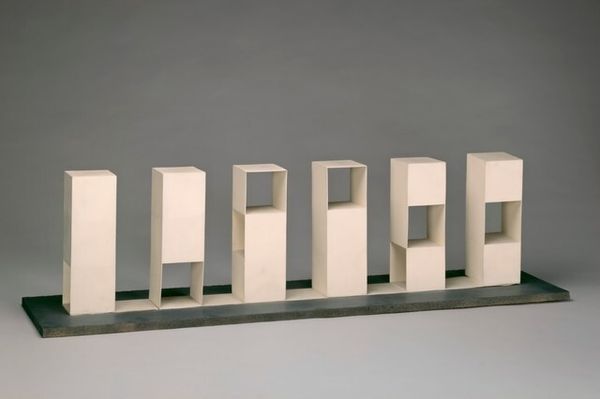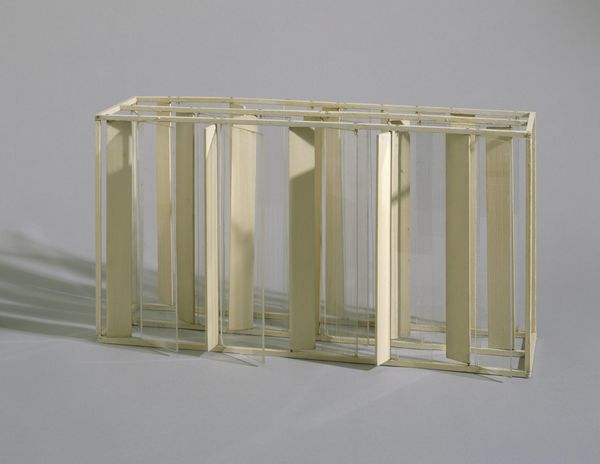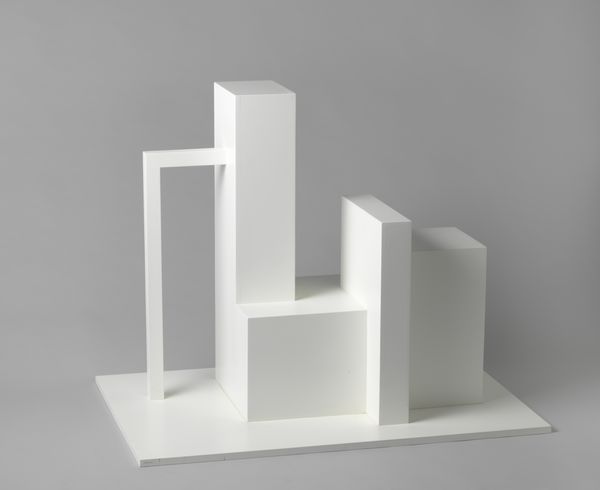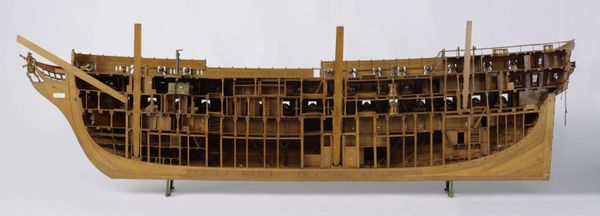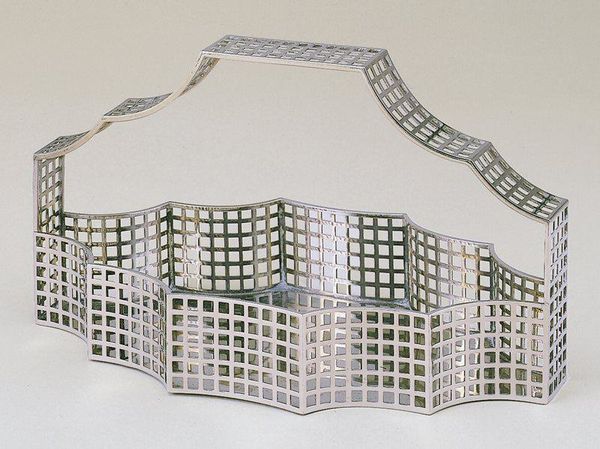
metal, glass
#
art-nouveau
#
metal
#
glass
#
geometric
#
decorative-art
Dimensions: 8 1/2 x 3 x 2 in. (21.59 x 7.62 x 5.08 cm)
Copyright: No Copyright - United States
Curator: This striking object, a bud vase, was crafted by Koloman Moser between 1904 and 1906 and is currently housed at the Minneapolis Institute of Art. It combines metal and glass in a very interesting way. Editor: My first impression is how industrial and austere it appears. The geometric pattern, this gridded structure—it gives off a very rigid, almost architectural feel. Curator: Indeed, it represents the confluence of Art Nouveau aesthetics with a growing industrial sensibility. Think about the workshops of the Wiener Werkstätte and the move to democratize art production! Moser wasn't simply designing objects; he was involved in the entire making process, blurring the lines between artisan and designer. Editor: Looking closer, the repetition of the squares and arches creates a rhythm that's really pleasing to the eye. It reminds me of serialist music. The emptiness of the grid itself is fascinating; it defines the form more than any solid mass could. The artist cleverly uses this negative space. Curator: The choice of materials—metal and glass—was deliberate. Metal for structure and industrial connotation, glass to hold the flowers that would bring this piece into the realm of natural life. There is a fascinating contrast that Moser creates here that really speaks to a desire to integrate nature and industrial innovation, perhaps expressing hope of integrating the urban with nature. Editor: It’s intriguing how the simplicity of the form—just a gridded rectangular prism topped with two arches—allows for so much interpretation. It's almost as if the structure serves as a visual code waiting to be unlocked by each viewer's unique experience. What would this have looked like in someone's home, a piece meant to bring the outside in? Curator: That’s the real power of this object. Moser succeeded in uniting form, function, and social meaning. Thinking about how luxury decorative art objects have served historically wealthy clients as means of displaying wealth and taste, it's hard to ignore that this piece is intended to reach a broader market. Editor: It also prompts me to appreciate how such clean, rigorous forms can still invite so much light and air, transforming something purely utilitarian into an aesthetic encounter. The interplay of line and shape is captivating, an essay in geometry brought to life. Curator: Precisely, the bud vase exemplifies Moser’s talent for integrating progressive ideas in art with functional design that reflects wider cultural trends of early 20th century Europe. Editor: Reflecting upon it, the true marvel lies not just in what it is, but in what it invites us to see—a play of form, light, and industrial echoes that still resonates today.
Comments
No comments
Be the first to comment and join the conversation on the ultimate creative platform.
